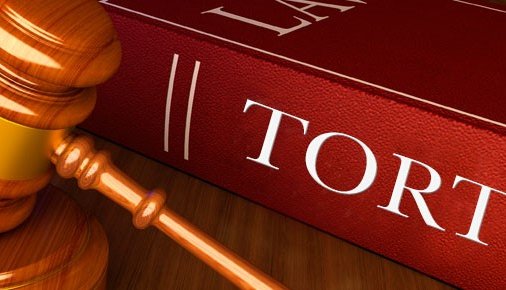In this article, Yash Kansal discusses the applicability of law of torts and general defences under law of torts.
Origin of Torts
The law of torts administered in India is a part of the common law which was firstly introduced in 18th century after establishment of Mayor’s Court in three presidency town of Calcutta, Madras, Bombay. These courts administered justice according to common law and statue of England. Being a part of common law the decisions under torts was based on previous judgments on various cases or according to ‘justice, equity, & good conscience’ i.e. based on rules of English law found applicable in Indian Society & circumstances.
Current applicability of Torts in India
The question arises whether the law of torts is applicable in India after independence or not?
“It has also been held that Section 9 of the Code Of Civil Procedure, which enables a civil court to try all suits of a civil nature, impliedly confers jurisdiction to apply the law torts as principles of justice, equity & good conscience.”[1]
General Defences Available To Defendant
According to Salmond – “ Tort is a civil wrong for which the remedy is a common law action for unliquidated damages and which is not exclusively the breach of contract or the breach of a trust other merely equitable obligation.”
As the definition states it is a civil wrong which results in legal damage (Injuria sine damno) or violation of legal right vested in the plaintiff with or without damage. The plaintiff files a civil suit against the defendant for reward of pecuniary damages in the form of compensation which is unliquidated in nature (not predetermined). Violation of legal right means where the person is legally bound does not perform his/her obligation for example a nurse hired for taking care of child is liable for non-performance of his duty whereas injury suffered by child due to negligence of his parents having moral duty towards their child does not amount’s to liability under torts. A civil suit can be filed for the cases related to nuisance, negligence, assault, trespass, defamation, etc.
However following general defences are available to the defendant in his defence against tortious claims
- Volenti Non Fit Injuira: It is the situation where the plaintiff himself agreed or consented to suffer harm. For example a person invites someone to attend party in his home cannot sue him for trespass. Similarly where the plaintiff himself took a lift from a jeep driver and later on suffered injuries or losses due to accident will not be entitle for any compensation (Padmavati v. Dugganaika) [2].
- Inevitable accident: It means an injury due to an accident which could not be avoided by taking reasonable care on the part of the defendant. In the case of Stanley v. Powell [3] the defendant fires bullet from his gun to shoot a bird which diverts after striking an oak tree and injures the plaintiff. It was held that the injury was accidental and defendant was not liable.
- Plaintiff the wrongdoer: It is the situation where the plaintiff is himself under a fault and cannot claim compensation. In Ponting v. Noakes [4], the plaintiff horse entered into defendant’s land and died after eating poisonous leaves of a tree.
- Act of god: Here the injury suffered by plaintiff is due to natural force which is beyond the control of human being. The occurrence of event must be extraordinary in nature. For example in the case of Nichols v. Marshland [5] Four bridges of the plaintiff was washed away due to escape of water from the defendant’s reservoir by happening of extraordinary rainfall. However if the rainfall happened to be not an extraordinary nature then the defence under act of god is not available to the defendant (Kallulal v. Hemchand)[6].
- Private defence: The law permits the use of reasonable force for the protection of personal life and property. But if the force applied is unreasonable then the defence is not available to the defendant. In the case of Ramanuja Mudali v. M. Gangan [7], the defendant a land owner for the protection of his property laid some electric wire which causes shock to the plaintiff crossing at night. The defendant had given no visible warning about such wire and he was held liable for the injuries caused to the plaintiff.
- Necessity: If any act is done to prevent a greater evil or harm then it was not actionable even the damage is caused intentionally. In Cope v. Sharpe [8], the defendant entered into plaintiff’s land to prevent the spread of fire which was considered necessary to save from imminent danger and hence the defendant cannot be held liable.
- Statutory Authority: Any damage caused by the act under a statue is not actionable. For example diversion of stream or river or construction of roads, dams, bridges by state (govt.) causing damage to plaintiff’s land or causing nuisance in surrounding does not amount‘s to any offence . In Hammer Smith Rail Co. v. Brand [9], the value of plaintiff property was depreciated due to noise, smoke & vibration caused by running of trains constructed under statutory authority. Hence it is not actionable.
References
[1] Union Carbide Corporation v. Union Of India , 1988 MPLJ 540 (ref. with Ratan & Dhirajlal ‘The Law of torts’ pg. 2)
[2] (1975) 1Kam. L.J. 93 1975, A.C.J. 222
[3] (1891) 11 Q.B. 86
[4] (1849) 2 Q.B. 281
[5] (1876) 2 Ex D. 1
[6] A.I.R. 1958 M.P. 48
[7] A.I.R 1984 M.P. 103
[8] (1981) 1 K.B. 496
[9] (1869) L.R.H.L. 171
{ [2-9] with ref to Law of Torts by R.K. Bangia}











